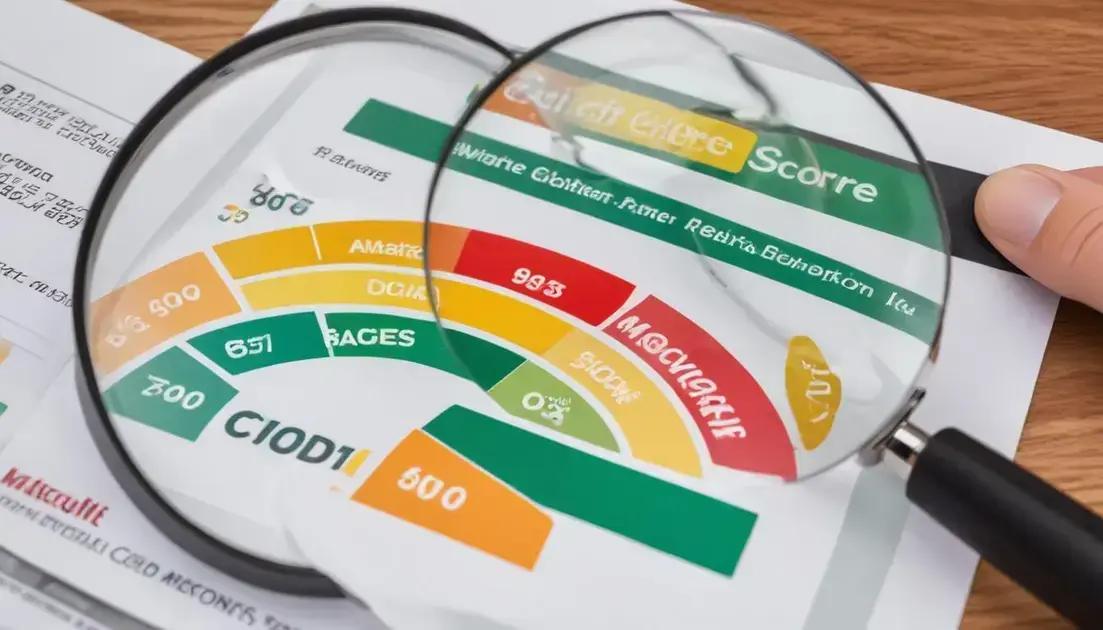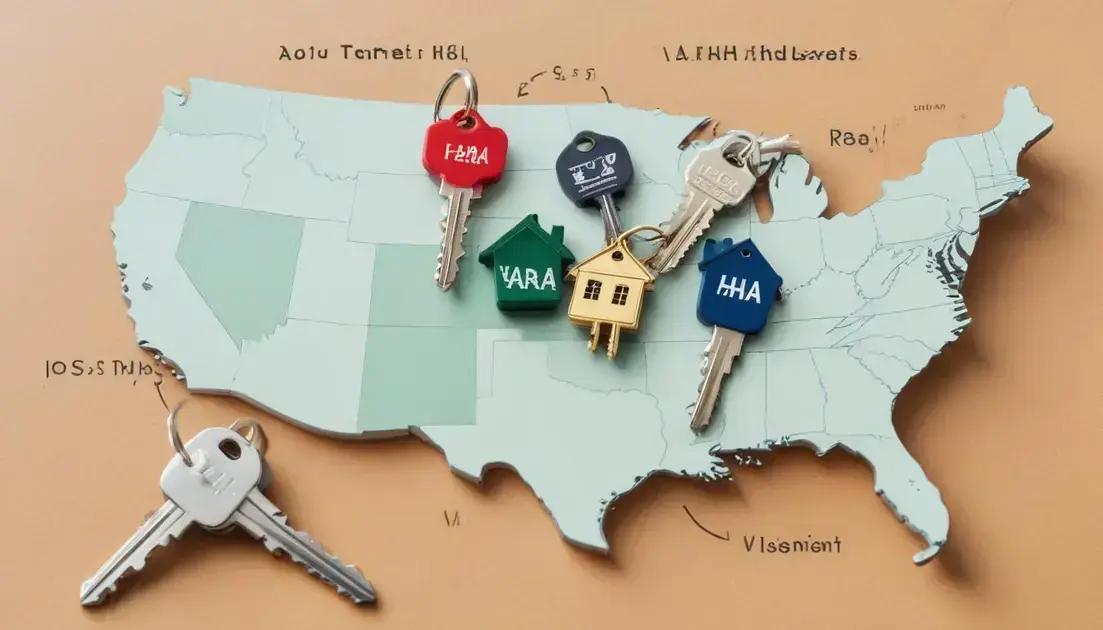Discover home loans: find the best rates and unlock your dream home

Dreaming of owning a home? Discover home loans that fit your budget and lifestyle. Whether you’re a first-time buyer or looking to refinance, understanding your options can save you thousands and turn your dream into reality.
What are home loans and how do they work?
A home loan, also known as a mortgage, is a type of loan used to purchase or refinance real estate. When you take out a home loan, a lender provides you with the funds needed to buy a property, and you agree to repay the loan over time with interest. The property itself serves as collateral, meaning the lender can take possession if you fail to make payments.
How Home Loans Work
The process begins with applying for a loan, where lenders evaluate your credit score, income, and debt-to-income ratio. If approved, you’ll receive a loan amount with specific terms, including the interest rate and repayment period (usually 15 to 30 years). Each monthly payment goes toward both the principal (the original loan amount) and the interest (the cost of borrowing).
Types of Home Loan Structures
There are two main types of home loans: fixed-rate mortgages, where the interest rate stays the same, and adjustable-rate mortgages (ARMs), where the rate can change over time. Choosing the right one depends on your financial stability and long-term goals.
Additionally, government-backed loans like FHA, VA, and USDA loans offer flexible qualifications for first-time buyers, veterans, and rural homeowners. Understanding these options helps you make an informed decision.
The Role of Amortization
Home loans use an amortization schedule, which outlines how each payment is split between principal and interest. Early in the loan, most payments go toward interest, but over time, more goes toward reducing the principal. This is why building equity—your ownership stake in the home—takes time.
Before committing, compare lenders, check for hidden fees, and consider getting pre-approved to strengthen your offer in competitive markets.
Types of home loans available in the market
When exploring home loans, you’ll find several types designed to fit different financial situations. Conventional loans are the most common, typically requiring good credit and a 20% down payment, though some lenders accept as little as 3%. These loans aren’t backed by the government, making them slightly harder to qualify for but often offering competitive rates.
Government-Backed Loans
For those who need more flexibility, government-insured loans can help. FHA loans, insured by the Federal Housing Administration, allow lower credit scores and down payments as low as 3.5%. VA loans, available to veterans and active military, offer 0% down payments and no private mortgage insurance (PMI). USDA loans support rural homebuyers with low-to-moderate incomes, also featuring 0% down options.
Fixed-Rate vs. Adjustable-Rate Mortgages
Fixed-rate mortgages keep the same interest rate for the entire loan term (usually 15 or 30 years), providing predictable payments. Adjustable-rate mortgages (ARMs) start with a lower rate for a set period (e.g., 5/1 ARM: 5 years fixed, then adjusts annually). While ARMs can save money initially, they carry the risk of rising payments later.
Jumbo Loans and Specialty Programs
For high-value properties, jumbo loans exceed conventional loan limits ($766,550 in most areas in 2024) and require excellent credit. Specialty programs like renovation loans (FHA 203(k) or Fannie Mae HomeStyle) bundle purchase and renovation costs, while interest-only loans let borrowers pay just interest for a set period before principal payments begin.
Comparing these options helps you find the best fit for your budget and goals. Always consult a lender to discuss eligibility and long-term costs.
How to qualify for a home loan
Qualifying for a home loan depends on several key factors lenders evaluate to determine your creditworthiness. Credit score is crucial – most conventional loans require a minimum 620 score, while FHA loans may accept scores as low as 580. The higher your score, the better your interest rate will typically be.
Income and Employment Verification
Lenders want to see stable income, usually requiring at least two years in the same job or field. They’ll calculate your debt-to-income ratio (DTI) by comparing your monthly debts to your gross income. Most lenders prefer a DTI below 43%, though some government loans allow up to 50%.
Down Payment Requirements
While 20% down avoids private mortgage insurance (PMI), many loans accept less. Conventional loans may go as low as 3%, FHA loans require 3.5%, and VA/USDA loans offer 0% down options. Having savings beyond the down payment (for closing costs and emergencies) strengthens your application.
Documentation You’ll Need
Be prepared with: pay stubs (last 30 days), W-2s (past 2 years), tax returns (past 2 years), bank statements (2-3 months), and documentation for any additional income sources. Self-employed borrowers typically need additional financial records.
Improving Your Approval Chances
If you’re not quite ready: pay down debts to improve your DTI, avoid new credit applications before applying, and save for a larger down payment. Consider getting pre-qualified (a soft estimate) before seeking pre-approval (a formal commitment).
Remember, each lender has slightly different requirements, so shopping around can help you find the best fit for your financial situation.
Comparing fixed-rate vs. adjustable-rate mortgages
When choosing between mortgage types, understanding the difference between fixed-rate and adjustable-rate mortgages (ARMs) is crucial. Fixed-rate mortgages maintain the same interest rate throughout the entire loan term, typically 15 or 30 years, providing predictable monthly payments that never change.
How Adjustable-Rate Mortgages Work
ARMs start with an initial fixed-rate period (usually 5, 7, or 10 years) before the rate adjusts periodically. These adjustments are based on a financial index plus a set margin. Common ARM structures include the 5/1 ARM (5 years fixed, then adjusts every year) or 7/1 ARM (7 years fixed). There are usually rate caps that limit how much the interest can change at each adjustment and over the life of the loan.
Pros and Cons Comparison
Fixed-rate advantages: Payment stability, easier budgeting, protection against rising interest rates. Disadvantages: Typically higher initial rates than ARMs, less flexibility if rates drop.
ARM advantages: Lower initial rates, potential savings if rates decrease. Disadvantages: Payment uncertainty, risk of significant rate increases, more complex terms to understand.
When Each Option Makes Sense
Fixed-rate mortgages are ideal for buyers who: plan to stay in the home long-term, prefer stability, or expect interest rates to rise. ARMs may benefit those who: plan to move or refinance before the adjustment period, expect income to increase, or believe rates will decrease.
Consider your financial situation, risk tolerance, and future plans carefully. Many borrowers opt for fixed-rate mortgages for peace of mind, while others use ARMs strategically for short-term savings.
The role of credit scores in home loan approval

Your credit score is one of the most critical factors lenders consider when approving a home loan. This three-digit number, typically ranging from 300 to 850, represents your creditworthiness and helps lenders assess the risk of lending to you. Generally, the higher your score, the better your chances of approval and the lower your interest rate will be.
How Credit Scores Affect Loan Terms
Borrowers with excellent credit (740+) qualify for the best mortgage rates and terms. Those with good credit (700-739) still get favorable rates but might pay slightly more. Fair credit (620-699) borrowers face higher rates and may need larger down payments, while those below 620 may struggle to qualify for conventional loans.
What Lenders Look For
Lenders examine all three major credit reports (Equifax, Experian, TransUnion) and use the middle score for qualification. They pay special attention to: payment history (35% of score), credit utilization (30%), length of credit history (15%), credit mix (10%), and new credit (10%). Even one late payment can significantly impact your score.
Improving Your Credit for Mortgage Approval
To boost your score before applying: pay all bills on time, reduce credit card balances below 30% of limits (ideally under 10%), avoid opening new accounts before applying, and check for errors on your credit reports. It typically takes 3-6 months of consistent behavior to see meaningful improvements.
Remember, different loan programs have varying credit requirements – FHA loans may accept scores as low as 580 with 3.5% down, while VA loans often have no minimum score but individual lenders may require 620+.
Down payments: how much do you really need?
When buying a home, the down payment is one of the biggest financial hurdles for most buyers. While the traditional 20% down payment is well-known, many loan programs today allow much smaller amounts, making homeownership accessible to more people.
Standard Down Payment Options
Conventional loans typically require 3-20% down, with 20% avoiding private mortgage insurance (PMI). FHA loans require just 3.5% down with a 580+ credit score. VA loans (for military) and USDA loans (rural areas) offer 0% down options for qualified buyers.
The True Cost of Smaller Down Payments
While lower down payments reduce upfront costs, they increase your long-term expenses: higher monthly payments, mortgage insurance premiums, and more interest paid over the loan’s life. A 20% down payment on a $300,000 home means borrowing $240,000 versus $291,000 with 3% down – a $51,000 difference that affects both payments and total interest.
Down Payment Assistance Programs
Many local and national programs help with down payments through: grants (don’t repay), forgivable loans (forgiven after years of ownership), and low-interest loans. These can cover 3-5% of the purchase price in many cases.
Saving Strategies
To build your down payment faster: automate savings from each paycheck, reduce discretionary spending, consider gift funds from family (allowed by most loans), or tap retirement accounts (with proper planning). First-time buyers can withdraw up to $10,000 from IRAs penalty-free for a home purchase.
Remember, your ideal down payment balances upfront affordability with long-term costs. Even starting with 5-10% can be smart if it gets you into the market while continuing to build equity.
Understanding closing costs and fees
Closing costs are the fees and expenses you pay to finalize your mortgage, typically ranging from 2% to 5% of the loan amount. These costs cover various services required to process and secure your home loan, and they’re separate from your down payment.
Common Closing Cost Components
Major fees include: loan origination fees (0.5%-1% of loan amount), appraisal fees ($300-$500), title insurance (0.5%-1% of home price), escrow deposits (for property taxes and insurance), and recording fees ($50-$300). Lenders are required to provide a Loan Estimate form within 3 days of application that details all expected costs.
Variable vs. Fixed Fees
Some costs are fixed (like credit report fees), while others vary by location (transfer taxes) or loan size (percentage-based fees). Third-party services like home inspections ($300-$500) and surveys ($400-$700) also add to your total closing costs.
Strategies to Reduce Closing Costs
You may be able to: negotiate with the seller to pay some costs (common in buyer’s markets), shop for services like title insurance (where allowed), ask about lender credits (accepting a slightly higher rate in exchange for lower fees), or look for assistance programs that help with closing costs.
Preparing for Closing Day
You’ll receive a Closing Disclosure 3 days before settlement listing your final costs. Bring: a cashier’s check for your share (or arrange wire transfer), government-issued ID, and proof of insurance. Review all documents carefully before signing – it’s normal for this process to take 1-2 hours.
Remember, while closing costs can’t be avoided entirely, understanding them helps prevent surprises and may reveal opportunities to save money on your home purchase.
Tips for first-time homebuyers
Buying your first home is an exciting but complex process. Start by checking your credit score at least 6 months before shopping – this gives you time to correct errors and improve your rating. Most lenders want to see a minimum 620 score for conventional loans, though FHA loans may accept lower scores with higher down payments.
Get Pre-Approved Before Shopping
A mortgage pre-approval shows sellers you’re serious and helps you understand exactly what you can afford. Unlike pre-qualification, this involves a credit check and documentation review. Remember, just because you’re approved for a certain amount doesn’t mean you should spend that much – factor in maintenance, taxes, and insurance.
Understand All Homeownership Costs
Beyond the mortgage payment, budget for: property taxes (1-2% of home value annually), homeowners insurance ($100-$200/month), maintenance (1-3% of home value yearly), and potential HOA fees. Utilities in a house often cost more than in apartments too.
Work With the Right Professionals
Choose an experienced real estate agent who specializes in first-time buyers and knows your target neighborhoods. Interview at least 3 lenders to compare rates and fees. Consider hiring a real estate attorney (required in some states) to review contracts, especially for older homes or complex transactions.
Don’t Skip the Inspection
Even on new construction, a professional home inspection ($300-$500) can reveal hidden issues. Attend the inspection to learn about the home’s systems. Be prepared to walk away if major problems surface, or negotiate repairs/credits with the seller.
Finally, remember your first home doesn’t have to be perfect – focus on good bones in a neighborhood with growth potential. You can always renovate later as you build equity.
Refinancing your home loan: when and why?
Refinancing your mortgage means replacing your current home loan with a new one, typically to secure better terms. The most common reasons to refinance include lowering your interest rate, reducing monthly payments, changing loan types, or accessing home equity. However, refinancing isn’t always the right move – it depends on your financial goals and market conditions.
When Refinancing Makes Sense
Consider refinancing when: interest rates drop significantly below your current rate (typically 0.5-1% lower), you want to switch from ARM to fixed-rate for stability, or need to shorten your loan term (e.g., 30-year to 15-year) to build equity faster. Cash-out refinancing can help fund major expenses if you have sufficient equity.
Break-Even Analysis
Calculate your break-even point by dividing total closing costs by monthly savings. If you’ll stay in the home longer than this period (typically 2-5 years), refinancing may be worthwhile. For example: $4,000 in fees ÷ $200 monthly savings = 20 month break-even. Online refinance calculators can help with this analysis.
Types of Refinancing Options
Rate-and-term refinance adjusts your interest rate and/or loan duration. Cash-out refinance lets you borrow against equity (up to 80% of home value). Streamline refinance (for FHA/VA loans) requires less documentation. Government programs like HARP helped underwater homeowners refinance in the past.
Costs and Considerations
Refinancing typically costs 2-5% of loan amount in closing fees (appraisal, title insurance, origination charges). Weigh these against potential savings. Also consider resetting the loan clock – a new 30-year term means more interest paid long-term, even at a lower rate. Your credit score, home equity, and debt-to-income ratio affect eligibility and rates.
Shop multiple lenders and compare Loan Estimates to find the best deal. Remember, the lowest rate isn’t always the best option if it comes with excessive points or fees.
Government-backed home loan programs

Government-backed home loan programs help make homeownership more accessible by offering flexible qualification requirements and favorable terms. These loans are insured by federal agencies, reducing risk for lenders and enabling them to offer better deals to borrowers who might not qualify for conventional financing.
FHA Loans: Popular First-Time Buyer Option
The Federal Housing Administration (FHA) insures loans requiring just 3.5% down with credit scores as low as 580 (or 10% down for scores 500-579). FHA loans feature more lenient debt-to-income ratios but require mortgage insurance premiums (MIP) for the life of the loan in most cases. These loans are particularly popular with first-time buyers.
VA Loans: Benefits for Military Members
The Department of Veterans Affairs (VA) guarantees loans for eligible veterans, active-duty service members, and surviving spouses. VA loans offer 100% financing (no down payment), no mortgage insurance, and competitive interest rates. While there’s no minimum credit score requirement, most lenders look for at least 620. A funding fee (2.3% for first-time use) typically applies but can be rolled into the loan.
USDA Loans: Rural Homebuyer Assistance
The U.S. Department of Agriculture (USDA) offers two rural housing programs: the Guaranteed Loan Program (through approved lenders) and Direct Loans (for low-income applicants). Both provide 100% financing with below-market interest rates. Income limits apply and the property must be in an eligible rural area (surprisingly including many suburban neighborhoods).
Comparing Government Loan Options
While government loans have advantages, they also come with specific requirements: FHA has property condition standards, VA requires a Certificate of Eligibility, and USDA has geographic restrictions. Conventional loans may be better for borrowers with strong credit who can make larger down payments to avoid mortgage insurance.
Each program serves different needs – consult with lenders who specialize in these loans to determine the best fit for your situation and location.
Common mistakes to avoid when applying for a home loan
Applying for a home loan can be complex, and many borrowers make avoidable mistakes that cost them money or even derail their homebuying plans. Being aware of these common pitfalls can help you navigate the mortgage process more successfully.
Not Checking Your Credit Early Enough
One of the biggest mistakes is waiting until you’re ready to buy to check your credit report. Errors on your report or low scores can take months to fix. Pull your reports from all three bureaus 6-12 months before applying and dispute any inaccuracies. Avoid opening new credit accounts before or during the mortgage process.
Changing Jobs During the Process
Lenders prefer to see stable employment history, typically at least two years with the same employer. Changing jobs (especially switching industries or to commission-based work) during the loan process can raise red flags and potentially delay or jeopardize approval.
Making Large Purchases Before Closing
Many borrowers don’t realize that major purchases (cars, furniture, appliances) can impact your debt-to-income ratio and credit score. Even after pre-approval, wait until after closing to make big-ticket buys. Similarly, avoid transferring large sums between accounts without proper documentation.
Not Shopping Around for Lenders
Accepting the first loan offer you receive can cost thousands over the life of your mortgage. Compare at least 3-4 lenders to find the best rates and terms. Look beyond big banks – credit unions and online lenders often offer competitive deals.
Underestimating Total Costs
Focusing solely on the mortgage payment while ignoring property taxes, insurance, maintenance, and HOA fees is a recipe for financial stress. Create a realistic budget that accounts for all homeownership expenses.
Skipping the Pre-Approval Process
Pre-qualification is just an estimate – a full pre-approval carries much more weight with sellers. It involves verifying your financial documents and running a credit check, making your offers more competitive in tight markets.
By avoiding these common mistakes and working with trusted professionals, you can streamline your mortgage application and secure the best possible terms for your situation.
How to negotiate better terms with lenders
Negotiating with lenders can save you thousands over the life of your mortgage, but many borrowers don’t realize this is an option. Everything in a mortgage is negotiable, from interest rates to closing costs – you just need the right approach and preparation.
Come to the Table Prepared
Before negotiating, check your credit score and correct any errors. Research current market rates using tools like Freddie Mac’s PMMS. Get pre-approved with multiple lenders to create competition – having written offers from other institutions gives you leverage in negotiations.
Focus on the Right Leverage Points
The most negotiable elements include: interest rates (even 0.25% makes a difference), lender fees (application, underwriting, processing), and points (fees paid to lower your rate). Ask lenders to match or beat competitors’ offers on these items. Consider negotiating a lender credit where they cover some closing costs in exchange for a slightly higher rate.
Understand Lender Motivations
Timing matters – lenders may be more flexible at month-end or quarter-end to meet targets. Smaller lenders and credit unions often have more discretion than big banks. If you’re bringing substantial assets (retirement accounts, investments), highlight this as you may qualify for better terms.
Effective Negotiation Tactics
Be polite but firm, saying things like ‘What can you do to match this offer?’ rather than making demands. Get all offers in writing before making decisions. If a lender won’t budge on rate, ask them to waive specific fees instead. Remember that loan officers want your business – they often have some flexibility if you ask.
Watch for Trade-Offs
Some ‘discounts’ come with strings attached, like mandatory autopay or higher down payment requirements. Read the fine print on any special offers. The lowest rate isn’t always the best deal if it comes with excessive points or restrictive terms.
With preparation and persistence, most borrowers can improve their loan terms. Even small reductions in rate or fees can translate to significant long-term savings on what’s likely your biggest financial commitment.
Navigating Your Home Loan Journey
Securing the right home loan is one of the most important financial decisions you’ll make. As we’ve explored, understanding your options – from loan types to qualification requirements – can save you thousands and make homeownership more affordable.
Remember that every borrower’s situation is unique. Whether you’re considering a conventional loan, government-backed program, or refinancing existing mortgage, the key is to research thoroughly, compare multiple lenders, and ask questions until you’re completely comfortable with the terms.
By avoiding common mistakes and being proactive in negotiations, you can secure financing that fits both your current budget and long-term financial goals. Your dream home is within reach when you approach the mortgage process with knowledge and preparation.
Use this guide as your roadmap to smarter borrowing decisions and successful homeownership.






